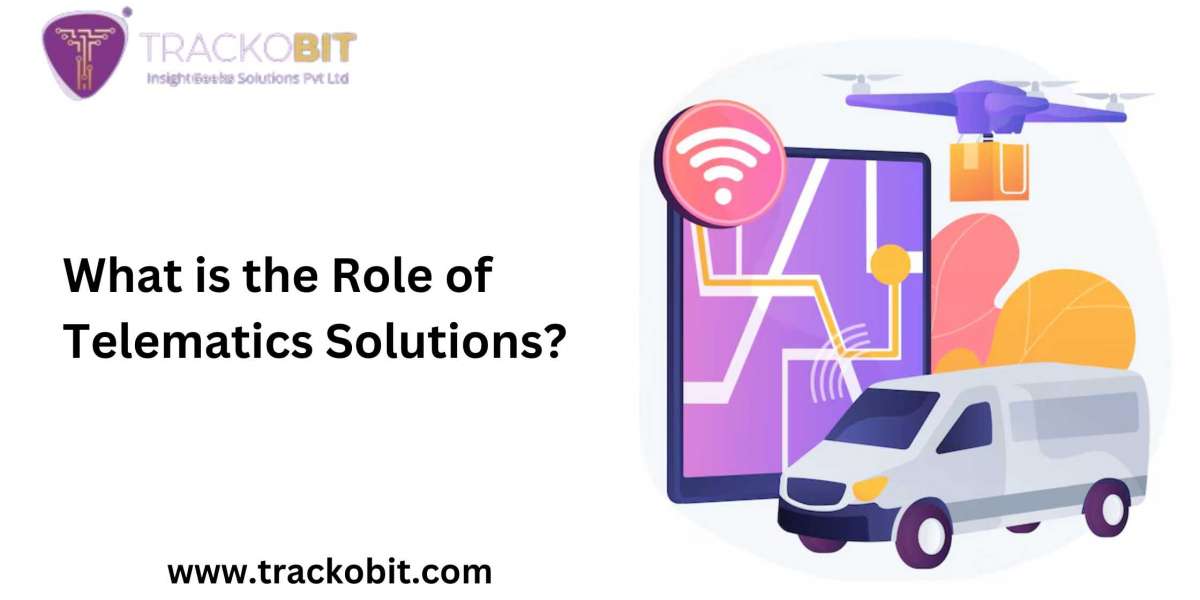Telematics solutions integrate telecommunications and informatics together to allow the communication of information over long distances. Due to the advancement in Telematics, this solution has added significant value to fleet vehicles with real-time information and data. It improves operational productivity, reduces costs, and ensures that employees and assets are operated within areas of safety.
What is Telematics Software Solutions?
Telematics Software mainly uses wireless data transmitting units such as satellite networks or centralized systems. Due to the global availability of these networks, telematics systems can operate very precisely and reliably.
Telematics systems capture location information from the vehicle-mounted GPS tracker and real-time diagnostic data captured by the vehicle's onboard system. This data is sent over one of the various wireless networks and forwarded to internet servers, which gather it to show on the dashboard.
Role of Telematics Solutions in Managing Fleet
Vehicle telematics solutions handle vehicle data for fleet managers. It consists of four steps: data collection, storage and transmission, and fleet management software operations.
- Data collection
A telematics system collects data through sensors, engine diagnostics, as well as GPS to share further for fleet operators to be able to make decisions based on such data.
Sensors
The sensors collect information on driver behavior such as dangerous maneuvers or events along with driving styles, hard braking, and rapid acceleration. Furthermore, sensors monitor general activities and the status of the vehicle such as the temperature in the cab or door opening.
Engine Data
Engine data comprises details on fuel consumption and maintenance status. This, therefore, means that the system can run real-time diagnostics permanently and provide data for better fleet maintenance and operations solutions.
GPS Fleet Tracking Software
With the GPS, one can trace the vehicle or fleet with data concerning the location of the vehicle or fleet. It helps fleet managers to manage vehicles in real-time.
- Data storage
All the data and information collected by sensors and collected through the GPS trackers and engine diagnostics. This information is sent to the telematics software housed within the vehicle. It then receives and temporarily retains within its receiver for subsequent distribution.
- Data Transmission
The software uses a GPS, satellite, or a cellular network for the data transmission. The decoded data can be received by the server for further optimal usage in the future. In other words, it first interprets and classifies operations. With this, fleet management software will have all the data that can be accessed and utilized by managers remotely.
- Fleet Management Software
The optimized data then reaches fleet management software from the central server. In such a way, data is visualized in translation to a user interface that fleets understand very easily. The software can be targeted to perform varied actions depending on the needs of the team or company.
Fleet Management Using Vehicle Telematics Solutions
Telematics solutions such as TB lite enhance fleet management by integrating with existing applications and systems.
- Location Tracking: Fleet managers use the location features of telematics as a means to track where every vehicle is at any given time. It enables goods or consignments to be delivered within the set time. So, when the driver faces traffic or delays, he can reroute his delivery in time. For instance, if a driver is stuck in a jam, a suggested alternative route could be suggested so that deliveries are completed within the promised time.
- Vehicle Performance Monitoring: This is the basic feature where telematics monitors engine health and other functions. Alerts are sent to fleet managers If any fault is detected, such as overheating or low tire pressure. Telematics helps in
avoiding major repair or replacement, which can become extremely expensive repairs through such proactive approaches
- Driver Behavior and Safety: Video telematics solutions monitor how drivers operate their vehicles. In this, the manager can view the driving behavior of a driver, whether they overspeed, idle for a long time, or brake heavily. This information is useful in training drivers to adopt better safety habits and less consumption of fuel. It reduces accidents and saves money on fuel.
- Cost Efficiency: All this valuable information at hand enables fleet managers to optimize routes and schedules with efficient travel times over traffic and use of fuel. The software also chooses the best routes for the trips
- Insurance Risk Assessment: Telematics can be used by insurance providers to view the driver's behavior. It enables them to accurately determine risk factors and, subsequently, amend the premiums for the insurance. The telematics software can also report whether a vehicle is being used in an outside geofenced area.
Before You Go!
Telematics solutions make complex fleet operations smooth and data-driven. The role of Telematics Solutions cannot be ignored since it allows fleet operators to have smooth, safe, and cost-effective operations.
Telematics is about to expand and grow enormously. How? It is capitalizing fully on modern and advanced GPS units.
Want to know more? Contact Trackobit and see yourself how this solution can become an important pillar of your fleet management.
Source : What is the Role of Telematics Solutions?





